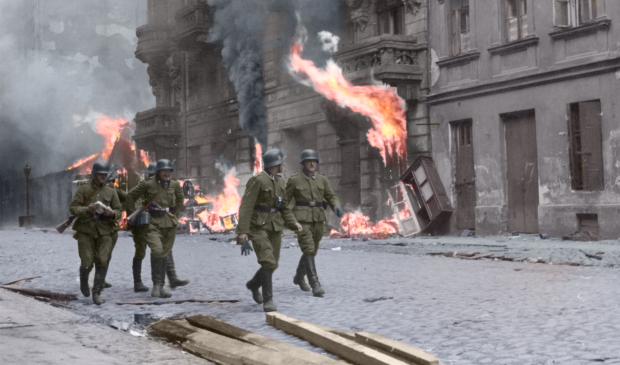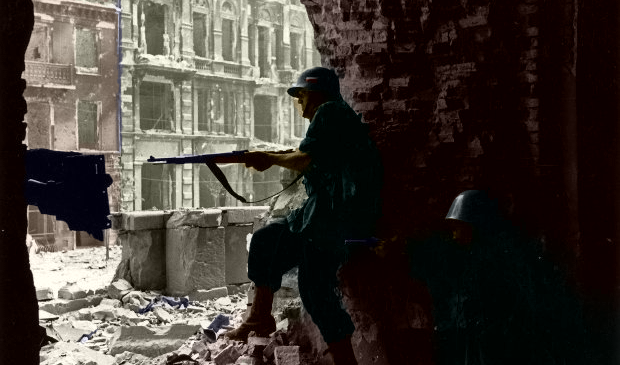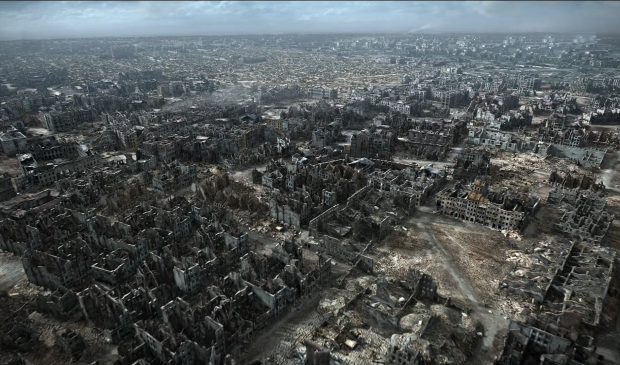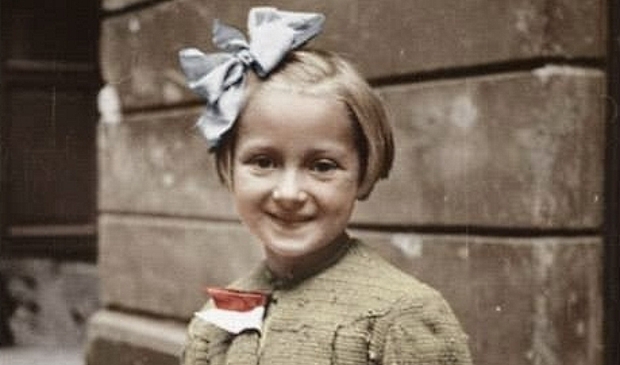
54 minutes after midnight on the first day of December 1962, a baroque temple twitched. Then it started to move at a speed of 9.3 cm per minute. There were not a single lamp that went out inside the building during that process.
It has been over half a century since the spectacular engineering operation – shifting church on Leszno street – occured. On that day, the crowd at Swierczewskiego Alley was accumulating since late evening. Overdressed people stood along the grid extended over the edge of not too deep trench. Traffic was stopped on the entire street.
It was unsure whether historic structure of the church would stand when moved. It was weakened by the war. Its walls could collapse. Authorities expected a violent reaction of Warsaw in such a case. It would be said that the collapse of the temple was brought on purpose. Therefore maximum precautions have been retained. There were two zones laid to prevent the gapers from standing too close. There was a cordon of militiamen around the building and the timing of the operation was kept secret.
As it turned out, they have failed to keep it a secret.
The designers experienced moments of anxiety at the beginning of the procedure, when the structure weighing 6.8 thousand tons moved for its short trip.
Monastery turned into prison
Church of the Nativity of the Blessed Virgin Mary, a former place of Carmelites, is a listed building from Baroque period. Built in a private village Leszno, belonging to the Crown Chancellor Jan Leszczynski. Construction work lasted very long, because from 1683 to 1731. According to the researchers, the temple was simplified and reduced version of the Church of St. Cross at Krakowskie Przedmiescie. Its design is attributed to Augustine Vincent Locciemu Younger, the same who designed the Palace in Wilanow for king Jan III.
During the Northern War it was occupied by the Swedes. From this place they sent their legation to Warsaw newly elected king Stanislaw Leszczynski on 28 July 1704. But bad times were yet to come. In 1818 by authorities’ orders the monastery was turned into prson. The monks still lived there though, cultivating their garden, praying in the church, trading vegetables and taking care of the cemetery. Meanwhile in 1822 there were members of the Patriotic Society among others Walerian Lukasinski, Maurycy Mochnacki and Ignacy Prądzyński inprisoned there. In November night of 1830 mob moved via Leszno to reach the prison. They eventually won and set the prisoners of state free. After the fall of the January Uprising in 1864, the Russian authorities have made the suppression of the order. Temple at Leszno became a parish church.
Starting the second half of the nineteenth century Jews began to prevail among the residents of the district. Decades later, during World War II, the German occupiers creating a Jewish ghetto, including Leszno church closed in its borders. It became a temple of the Jews Catholics then. After the collapse of the Warsaw Ghetto Uprising in 1943 the church was ransacked. Germans did not spare even the ashes of monks resting in the basement. Warsaw Uprising brought larger destruction – building lost its roof, part of the vault collapsed. The monastery adjacent to the church was also destroyed.
In 1948 the fate of the church was still not sure. In the discussions on the future course of the Route W-Z, which was drawn in the ruins, idea of the demolition of the temple was present. It stood on the line of new road. It was extremely destructive choice for the partially preserved buildings in the historic Leszno street. Rather than to lead the route slightly curved a dozen meters further north, through the rubbles ghetto, new route was planned on the axis of the historic street. To make that happen the northern frontage of the street was demolished including dozen houses dating back from the eighteenth and early nineteenth centuries still possible to be rebuilt.
Prestigious operation on 420 rollers
WZ Route was officially opened on 22 July 1949. Songs were sung about it. The albums praised it with photographs. The only thing not shown on them was the section with the church. It seemed as wrongly placed projecting at almost half the width of the street. When in the early 60s it was decided to expand the roadways of Swierczewskiego Alley (todays Solidarity Alley) there came an idea of the demolition of the church.
However the authorities have recognized that the political cost would be too high and agreed to go with the project of shifting the temple.
The operation was prestigious. Preparations took several months. The church was cut off from its foundations . Reinforced concrete grate and six tracks with 420 rollers were put in their place. The historic structure had to go back in place of the former monastery garden. On 1 December 1962, 54 minutes after midnight five manual winches started to work. Each of them served by just few workers. Temple moving at a speed of 9.3 cm per minute after 226 minutes shifted about 21 meters back into the lot.
The place where the church originally stood is marked on the asphalt roadway of northern part of the street.
The long road of heavy temple in numbers
6.8 thousand tons – total mass of the church
420 – there were so many rolls, on which the building slid
226 minutes – the whole operation lasted
21 meters – the distance the church was moved back
6 – number of tracks with rollers
5 – number of manually operated winches to move the building
0 Comments
Leave a reply
You must be logged in to post a comment.






